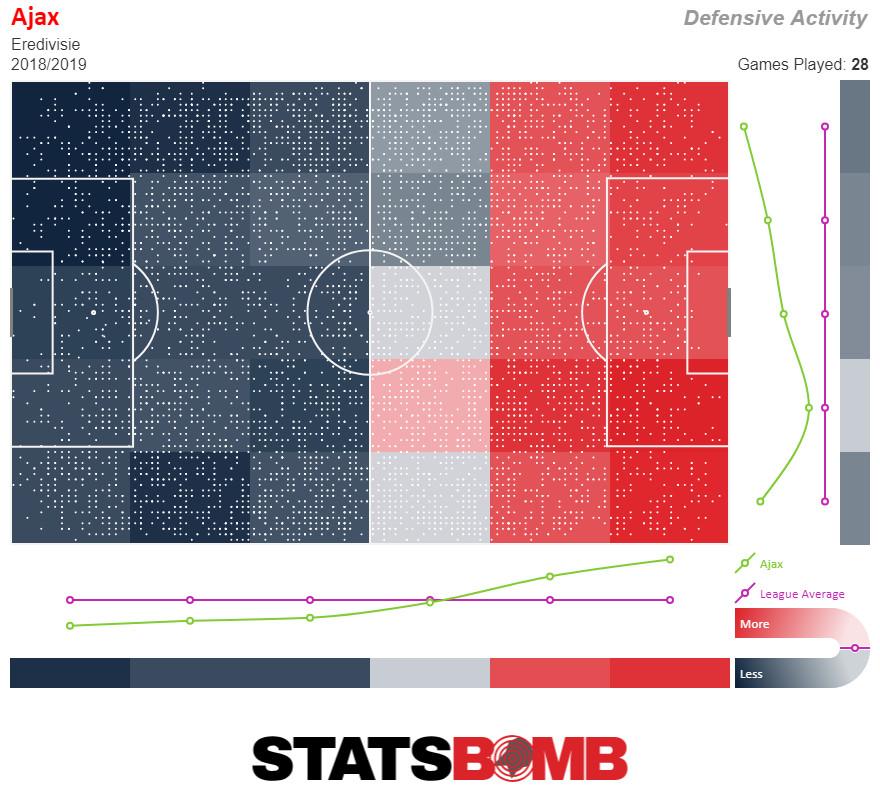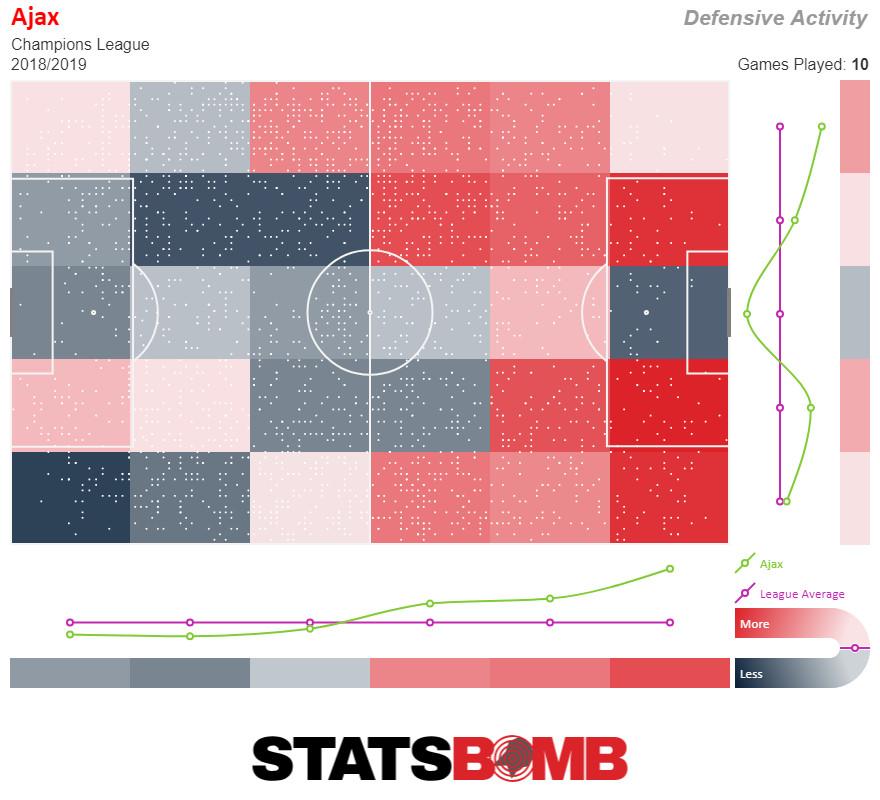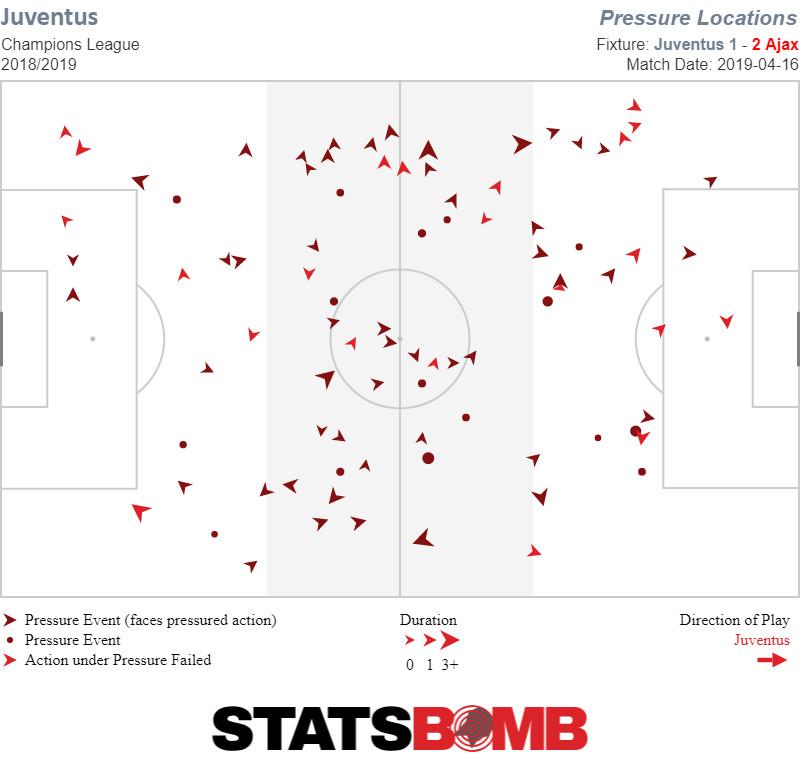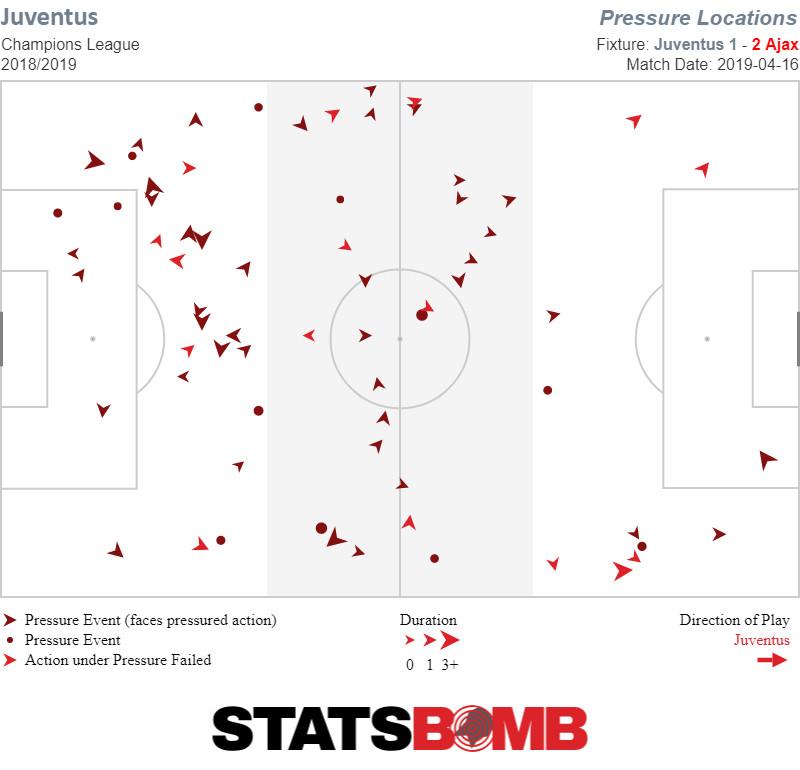
The Champions League semifinals are an exclusive club. Not every team can just lace it up and challenge for the biggest trophy in European soccer. That’s been especially true in recent years. Over the past five tournaments, four teams—Atlético Madrid, Bayern Munich, Juventus, and Real Madrid—have accounted for 14 of 20 semifinal slots. No other club has made it that far more than once. The times, however, they are a changin’. This year, Barcelona and Liverpool, a finalist in 2018, are matched up in the favorites’ bracket. But on the other side of the draw, two new contenders have emerged: Tottenham Hotspur and Ajax, both pure underdogs, will square off for a place in the final on June 1 in Madrid.
There are, perhaps, some recent precedents for Spurs. Last season, Roma reached the semifinals; Chelsea did the same in 2014. In their respective seasons, they each finished in third place in their domestic leagues, as Spurs are likely to do in the Premier League this season. All three of those teams had signature wins over more talented teams in the quarterfinals: Chelsea beat Paris Saint-Germain, Roma had a ridiculous comeback against Barcelona, and Spurs, well, they won an instant classic against Manchester City.
It’s more difficult to find a comparison for Ajax. The legendary Dutch team plays in a much smaller domestic league, the Eredivisie, and there’s a vast gap between their competition in Holland and Europe’s bigger leagues. Perhaps the closest recent comparison is Monaco during the 2016-17 season, but even they don’t really fit. For starters, despite their incredibly unlikely season, which culminated with a Ligue 1 championship, Monaco operates at a massive disadvantage in France alongside PSG. And the French domestic league is stronger than the Eredivisie. No, to find the last team from outside Europe’s top five leagues to make the semifinals, you have to go way back to another team from Holland, PSV, in 2004-05. That side, which lost to AC Milan in the semifinals (before Milan’s historic loss to Liverpool in the finals in which it blew a three-goal lead), made its run a year after a little-known, 41-year-old manager named José Mourinho took Portuguese side Porto to the title.
Situating these teams within the hierarchy of European soccer is important because it provides context for how each has approached the Champions League thus far and how they are likely to approach their semifinal, the first leg of which takes place Tuesday at Tottenham Hotspur Stadium in London. There’s a reason, beyond talent alone, that so few teams from smaller leagues have progressed like Ajax have this season. There’s a feeling of tactical whiplash that comes from dominating lesser opponents domestically to being an underdog in the Champions League. Many teams find it difficult to transition from league play, where they control the game with the lion’s share of possession and force less-talented opponents to react to them, to the bright lights of Champion’s League play, where they have to defend and counterattack against more talented sides. What makes Ajax unique is that they’ve avoided that problem entirely.
In the Netherlands, Ajax play a high-pressure game. They strangle opponents in their own half. Their defensive pressure map, shown below, shows how they do it: The red areas are where Ajax execute more defensive actions (such as interceptions, tackles, and pressures on the ball) than league average, and the blue areas are where they defend less. The intensity of the color represents how much farther above (or below) average those actions are occurring. The bright red in Ajax’s opponents’ half of the field shows the extent to which they repossess the ball before teams can even contemplate mounting a counterattack against them. The blue depicts the areas of the field that opponents rarely get to, where Ajax are rarely even forced to defend.

It should, in theory at least, be harder to maintain that intensity in the Champions League, where Ajax faces stronger defenders, trickier midfielders, and faster strikers than they see in the Eredivisie. And yet, their defensive pressure map says otherwise:

Ajax’s dominance isn’t quite as pronounced in the Champions League as it is in the Eredivisie, but the pattern is the same. They press often and aggressively and play on the front foot. Ajax are one of the most aggressive pressing teams in the Champions League. Only Manchester City, Liverpool, and Barcelona’s defensive actions took place, on average, farther away from their own goal than Ajax’s.
Ajax’s performance can’t be explained away by an easier draw, either. In the knockout rounds, they beat Real Madrid and Juventus. In the group stage, they had to play Bayern Munich twice. Only their four matches against Benfica and Greek side AEK in the group stage were remotely easy.
The remarkable thing about Ajax is that they aren’t playing like underdogs at all. Instead, a collection of exciting young stars and perfectly cast veterans are going toe to toe with the best teams in the world. And it all starts with midfielder Frenkie de Jong.
De Jong, who will join Barcelona at the end of the season, can do absolutely everything. He has the vision and skill with the ball at his feet to be a one-man transition, leaving defenders in his wake as he dribbles by them to pick out line-splitting passes at will. He has the defensive chops to win the ball back in space—before the 21-year-old bloomed into the forceful midfielder he is now, he played as a center back for Ajax. And, most importantly, given his team’s fearless tactical approach, he has the athleticism to get up the field with the ball and still recover to protect his defensive line. It was clear De Jong was a future star, which is why Barcelona shelled out €75 million for him in January, but nobody quite realized the future was already here.
De Jong is indicative of Ajax’s blend of youth and experience. In defense, 19-year-old captain Matthijs de Ligt is paired with 29-year-old Manchester United washout Daley Blind. Dusan Tadic leads the line in attack. The former Southampton player, and before that, a bright Eredivisie prospect from FC Twente, has spent most of his career as a wide forward, and his striker game is somewhat unconventional. Tadic isn’t exactly a false nine—he doesn’t drop deep enough to facilitate creative play—but his movement is unconventional, and he challenges center backs to keep track of him. And when he goes poking and prodding out wide, wingers David Neres and Hakim Ziyech make all sorts of dangerous runs into the box.
Ziyech, in particular, has a license to shoot from more or less anywhere. Ajax’s preference for a high-tempo match means that rather than work meticulously to break down a dug-in defense, they rely on one of their creative players to produce a moment of highlight-reel magic. If that doesn’t come off, they win the ball back in possession and start all over again.
It’s a wonder that the question hanging over this semifinal revolves around how Spurs will handle Ajax’s game, and not the other way around, but that’s the dynamic at play. Spurs are capable of dominating against weaker opposition, as they do most weeks in the Premier League, and counterpunching against stronger teams, as they have to do against the handful of other elite teams at the top of the EPL table. It’s how they managed to get by City despite being outshot 20-11 in the dramatic fever dream of a second leg on April 17.
Spurs have managed to be successful this season while overcoming two major hurdles. They’ve faced a number of injuries, meaning that their core group of attackers, Harry Kane, Dele Alli, Christian Eriksen and Son Heung-min, have spent very little time on the field together. Kane is currently out with an ankle injury, and Son is suspended for the first leg, meaning Spurs may well struggle to finish off attacking moves, even if they succeed at breaking through the Ajax press. Fernando Llorente’s “Elbow of God” goal may have been the difference against City, but the Spurs’ emergency striker is 34 years old, and his immobility makes him ill-equipped to play in the kind of up-and-down matchup Ajax will look to draw Spurs into playing. Another option for Tottenham at striker is the Brazilian Lucas Moura, who is fast with the ball at his feet and an active presser, but who struggles to get shots off at a high rate in the penalty area. He averages 1.76 shots per 90 minutes in the penalty area, which is fine for a player who isn’t a team’s primary striker, especially considering everything else he does, but is light if he’s supposed to be the main man.
Then there’s midfield. Spurs started off the season with too few bodies in the center of the pitch. They’ve declined to bring in any new players in the last two transfer windows and let Mousa Dembélé leave for China in January. Victor Wanyama has spent most of the season hurt; Eric Dier suffered a string of freak injuries, including an appendectomy; Harry Winks and Moussa Sissoko have each missed time to injury. Manager Mauricio Pochettino has been nothing short of brilliant coaching around the player shortages, ping-ponging between formations, like resorting to playing three center backs when the situation called for it, or adopting an air-raid attack. But he can’t entirely cover the holes that frugal roster construction and untimely injuries have left in Tottenham’s squad.
All of this leads to considerable uncertainty when guessing how Spurs will line up against Ajax. If Pochettino decides to start his two best healthy midfielders, it probably means a double-pivot of Wanyama and Dier. It’s not the most mobile midfield base, so they’ll have trouble if De Jong gets the chance to torture them with the ball at his feet. That’s why priority no. 1 for Spurs has to be to stop De Jong from getting the ball.
For inspiration, they could look to the first half of the second leg of the quarterfinal between Ajax and Juventus. In that match, Juventus managed to keep Ajax and De Jong under control by denying him the ball in dangerous midfield areas and denying him the ability to turn and create when he dropped back to receive it. Juventus forward Paulo Dybala was particularly influential, logging 14 defensive pressures, helping the even more active midfielders behind him, Blaise Matuidi, Emre Can and Miralem Pjanic, record 18, 16, and 14 defensive events, respectively.

The second half, however, was a different story. Dybala came off hurt, but his replacement, Moise Kean, didn’t match his defensive work and Juventus’s midfield crumbled without it. Juventus was forced to defend farther away from Ajax’s goal as they retreated deeper into their own half. Matuidi was the most active defender with 11 events.

The lesson for Spurs is that they will need to employ their attacking players as the first line of defense against Ajax. That means that Llorente should probably sit, and they should live with Lucas’s lack of attacking production if it means he’s working hard to prevent the ball from getting to De Jong. Spurs could adopt a basic 3-4-3/3-5-2 system, which would put Alli and Eriksen, Spurs’ two best non-striker attackers, in a front three with Lucas, where they could vigorously contest possession to protect the slower midfielders behind them (if it ends up being Dier and Wanyama). The wing backs would provide width, and the extra center back would provide further protection for the midfield.
The matchup is likely to be very evenly matched. Despite all of Spurs’ injuries, they have a strong core who will take the field. Eriksen and Alli are fantastic creative attackers, and center backs Toby Alderweireld and Jan Vertonghen (both former Ajax players) are immensely skilled at the back. If Spurs can strangle Ajax in the midfield, and provide a platform for the front three to combine and create chances, they’ll win. That’s so much easier said than done, however. Real Madrid and Juventus both tried and failed.
These two legs will be defined by which team imposes its style of play, and it’s hard to bet against Ajax. It is downright shocking that a team with such limited resources has been able to build a team that is not only in the semifinals of the Champions League but has gotten there by imposing their style on Europe’s elite teams. Regardless of who wins, there’s no doubt that the matchup will be about Spurs reacting to Ajax’s game and not the other way around. That in and of itself is an amazing achievement for the Dutch side. Now imagine if they reach the finals doing it as well.
Mike Goodman is the managing editor of StatsBomb.